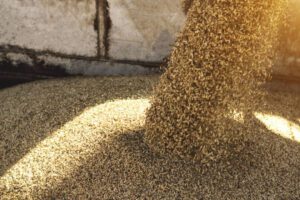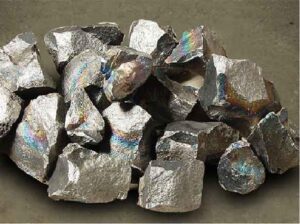
Ukraine since the beginning of the 2021/2022 marketing year (MY, July-June) and as of August 13 had exported 4.61 million tonnes of grain and leguminous crops, which is 10% more than on the same date of the previous MY.
According to the information and analytical portal of the agro-industrial complex of Ukraine, to date, 1.82 million tonnes of wheat (23.5% less compared to the same date 2020/2021MY), 1.62 million tonnes of barley (19.6% more), 1.15 million tonnes of corn (2.3 times more), and 16,200 tonnes of flour (1.5 times less) have been exported.
As of the indicated date, 5,100 tonnes of rye were also exported, which is 17 times more than the indicators of the last MY.
As reported, the export of wheat in the 2020/2021 MY amounted to 16.64 million tonnes, corn – 23.08 million tonnes, barley – 4.23 million tonnes, flour – 129,000 tonnes.
In addition, Ukraine in the 2019/2020 MY exported 56.72 million tonnes of grain and leguminous crops.

Ukraine in January-July this year increased exports of titanium-containing ores and concentrate in quantity terms by 10.3% compared to the same period last year, to 358,762 tonnes.
According to statistics released by the State Customs Service, in monetary terms, exports of titanium ores and concentrate increased by 22.2%, to $93.870 million.
At the same time, the product was mainly exported to China (26.03% of supplies in monetary terms), Mexico (14.78%) and the Czech Republic (13.63%).
Ukraine during this period imported 588 tonnes of titanium-containing ores worth $545,000 from Senegal (86.24%) and Germany (13.76%), while in January-July last year it imported 650 tonnes for $525,000.

The U.S. Department of Agriculture (USDA) in the report for August improved the forecast for the export of Ukrainian wheat in the 2021/2022 marketing year (MY, July-June) by 2.5 million tonnes compared to the forecast in July, to 23.5 million tonnes.
The forecast for wheat harvest in Ukraine in the new marketing year has been increased by 3 million tonnes compared to the July forecast, to a record 33 million tonnes. As noted in the USDA, this figure has been increased due to the expansion of the area under this crop, as well as due to its higher yield this season.
In the August report, the USDA also improved the forecast for the corn crop and its exports from Ukraine in 2021/2022 MY by 1.5 million tonnes compared to the July forecast. Thus, corn production is expected to grow from 37.5 million tonnes to 39 million tonnes, its export – from 30.5 million tonnes to 32 million tonnes. As explained, the forecast for corn harvest in Ukraine has been increased, as the reduction in acreage under this crop is more than offset by an increase in its yield prospects.
As reported, since the beginning of 2021/2022 MY and as of August 6, 2021, Ukraine has exported 3.63 million tonnes of grains and legumes, which is 12% more than on the same date of the previous MY. It also exported 1.31 million tonnes of barley (23.2% more compared to the same date in 2020/2021MY), 1.25 million tonnes of wheat (a quarter less), 1.05 million tonnes of corn (2.1 times more), 13,500 tonnes of flour (1.6 times less).

Ukraine in January-July 2021 reduced electricity exports by 24.1% (by 678.2 million kWh) compared to the same period in 2020, to 2.131 billion kWh, according to the data of Ukrenergo.
According to the calculations of the Interfax-Ukraine agency, in particular, supplies from the Burshtyn TPP energy island in the direction of Hungary, Slovakia and Romania decreased by 16.6% (by 295.2 million kWh), to 1.484 billion kWh.
Electricity supplies to Poland decreased by 39.8% (353.8 million kWh) compared to the same period last year, to 534.1 million kWh.
Electricity exports to Moldova decreased by 13.2% (by 17.2 million kWh), to 113 million kWh.
There were no deliveries to Belarus and the Russian Federation in January-July 2021 (against 12 million kWh to Belarus for the seven months of 2020).
In July 2021, Ukrainian electricity exports amounted to 366.3 million kWh, which is 2.8 times more than in July 2020 (133 million kWh).
In addition, Ukraine in January-July 2021 reduced electricity imports by 44.5% (by 791 million kWh) compared to the same period last year, to 987.3 million kWh, in particular Belarus supplied 522.6 million kWh, Slovakia – 258.4 million kWh, Russia – 101.9 million kWh, Hungary – 66.4 million kWh, Romania – 38 million kWh.
In July 2021, electricity imports amounted to 1.2 million kWh against 21.8 million kWh in July 2020.
Within the framework of technological flows associated with the parallel operation of the integrated power system of Ukraine with the power systems of neighboring countries and power supply of dead-end areas, 32.9 million kWh of electricity were imported from the Russian Federation over the seven months, and 600,000 kWh from Belarus.
Emergency supplies from Slovakia during this period amounted to 200,000 kWh, from Belarus – 9.7 million kWh, to Belarus – 400,000 kWh, to Poland – 8.5 million kWh.

Ukraine in January-June of this year reduced exports of ferroalloys in quantity terms by 6.8% compared to the same period last year, to 388,691 tonnes.
According to statistics released by the State Customs Service, in monetary terms, exports of ferroalloys increased by 17.4%, to $523.365 million.
The product was mainly exported to Turkey (17.84% of supplies in monetary terms), Italy (14.61%) and Poland (11.93%).
In addition, in January-July 2021, Ukraine imported 30,294 tonnes of this product, which is 40.3% more compared to January-July 2020. In monetary terms, imports increased by 40.6%, to $84.065 million.
The product was mainly imported from Brazil (19.16%), Kazakhstan (17.13%) and Russia (10.97%).

Mining enterprises of Ukraine in January-July this year reduced exports of iron ore in kind by 3.5% compared to the same period last year, to 26.08 million tonnes.
According to statistics released by the State Customs Service on Wednesday, during the specified period, foreign exchange earnings from iron ore exports increased 2.15-fold, to $4.695 billion.
Iron ore was exported mainly to China (45.8% of supplies in monetary terms), the Czech Republic (9.47%) and Austria (8.09%).
In January-July 2021, iron ore was imported to Ukraine for $130,000 in a total volume of 1,134 tonnes, while in January-July 2020, 84 tonnes iron ore for $42,000 was imported.
In January-July 2021, iron ore was imported from Egypt (79.23%), Poland (10%) and Russia (3.85%).